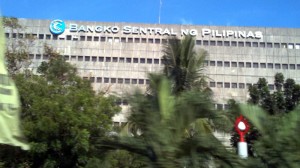PH foreign exchange reserves drop to $79.29B
The country’s foreign exchange reserves fell to their lowest point since the middle of 2012, although remained more than enough to cover the economy’s needs for nearly 11 months.
Data released by the Bangko Sentral ng Pilipinas (BSP) showed the country’s gross international reserves (GIR) stood at $79.295 billion at the end of October, lower than the $79.556 billion the month before.
This was the lowest amount since $79.129 billion in June of 2012.
Foreign exchange reserves serve as the economy’s buffer from external crises.
The economy needs a steady supply of foreign currencies to allow businesses and the government to do business with the rest of the world.
Despite the decline, the BSP said the level of reserves at the end of last month was still above international benchmarks.
The nation’s reserves were enough to cover 10.8 months worth of imports of goods and services, and 8.2 times the country’s short-term debt based on original maturity.
Officials attributed the drop to changes in the value of gold in international markets and withdrawals by national government for foreign debt payments.
These outflows were partially offset by the net foreign currency deposits by the Treasurer of the Philippines, income from the BSP’s investments abroad, and revaluation adjustments on the BSP’s foreign currency-denominated reserves.
Reserves are built up when there is a surplus of foreign currencies circulating in the economy, which the BSP absorbs by buying in the market.
Net international reserves (NIR), which refer to the difference between the BSP’s GIR and total short-term liabilities, also decreased to $79.3 billion as of end-October 2014, compared to the end-September 2014 NIR of $79.5 billion.
Based on the current level, the country’s reserves are likely to fall short of official projections for the year.
The BSP earlier this year said it expected the GIR to reach $85 billion from last year’s $83.18 billion.
The bulk of the country’s foreign exchange inflows comes from recurring sources such foreign trade, and income from business process outsourcing (BPO) and tourism, and remittances from migrant workers.
Remittances from overseas Filipino workers (OFW), expected to grow by at least 5 percent to $23.6 billion this year, is the largest source of foreign exchange for the economy.
Remittances help prop up the peso’s value even as money in the form of investments leave the country.
Counting only recurring sources of income, the government expects the country to record a net inflow of $6 billion from last year’s $9.4 billion, reflecting an increase in imports.
Foreign investments, however, have been more volatile.
Latest data from the BSP showed the country still had $1.01 billion in net outflows of foreign portfolio investments at the end of the third week of October.
Long-term foreign direct investments (FDI) said cumulative net inflows reached $4 billion at the end of July, higher than the $2.56 billion in the same period in 2014.















